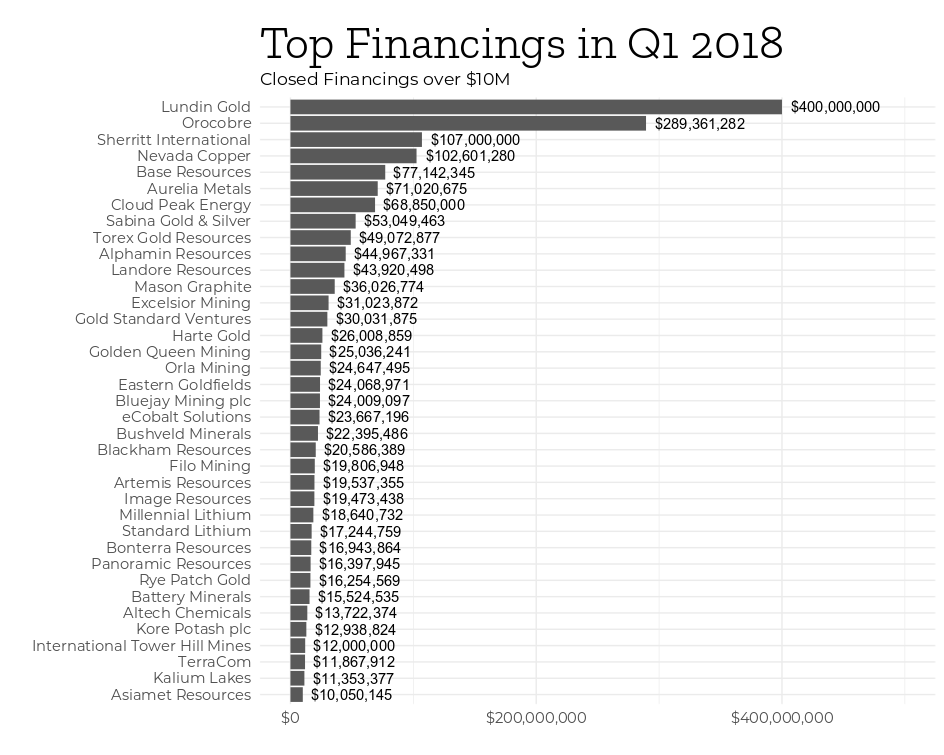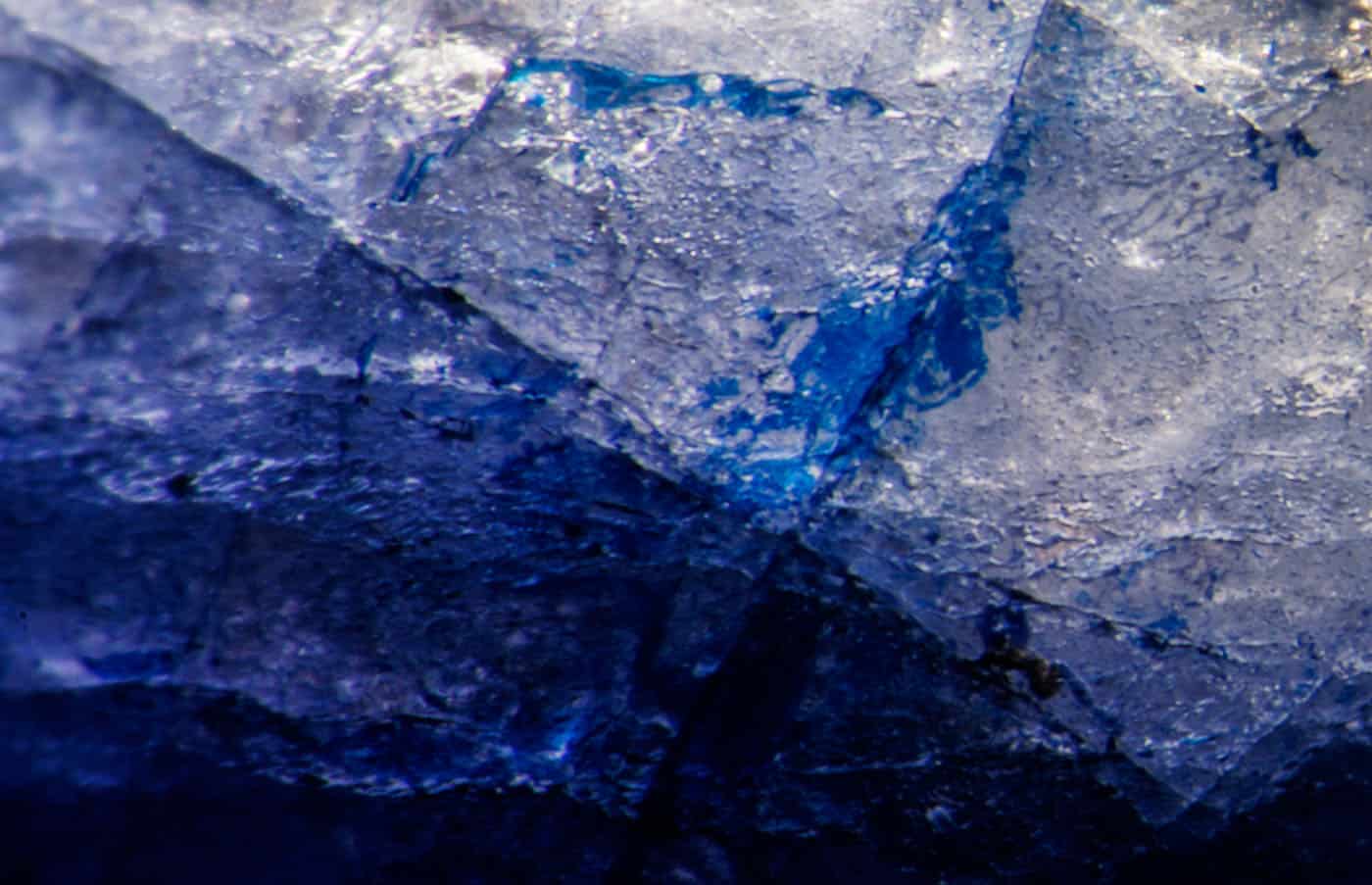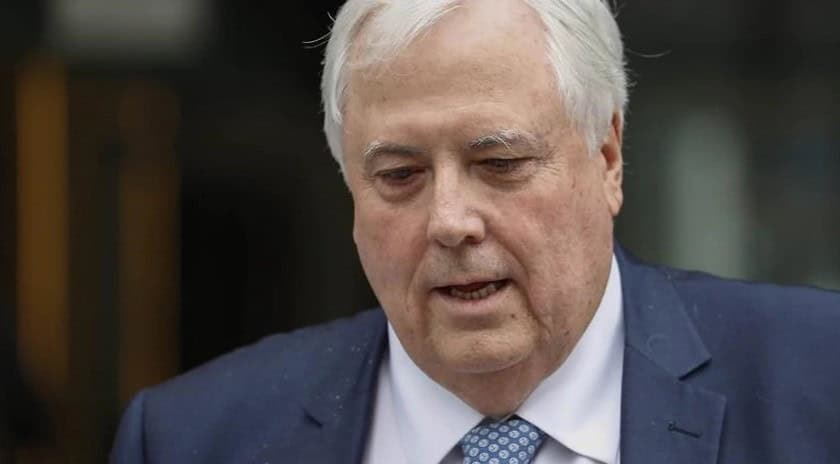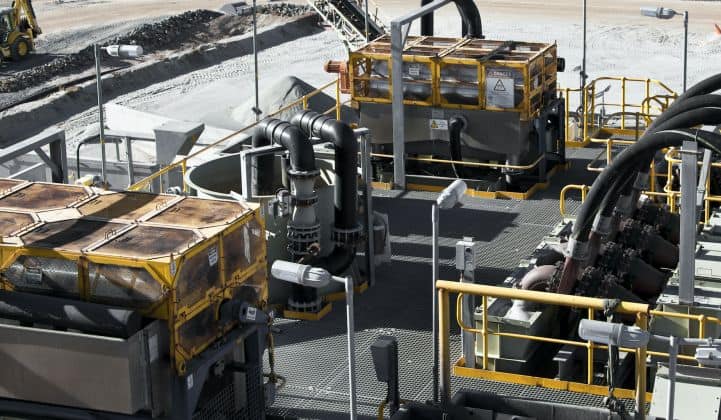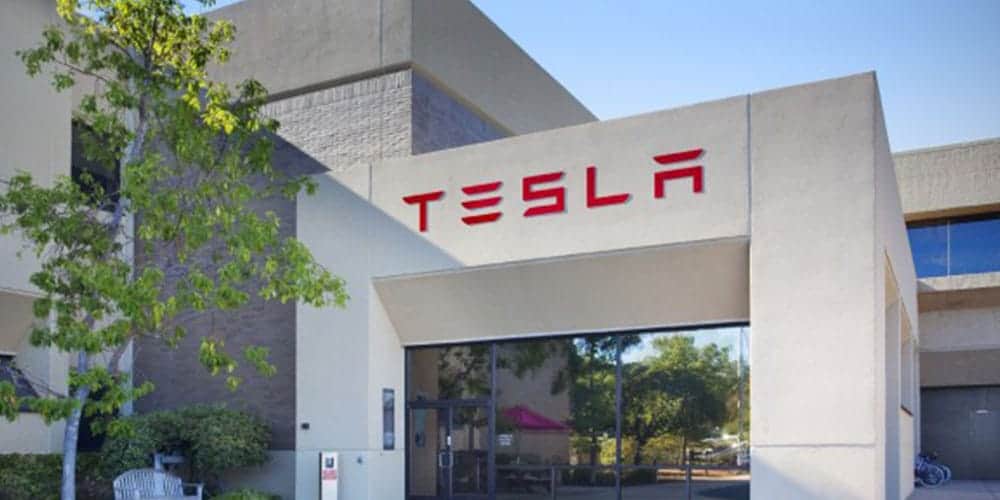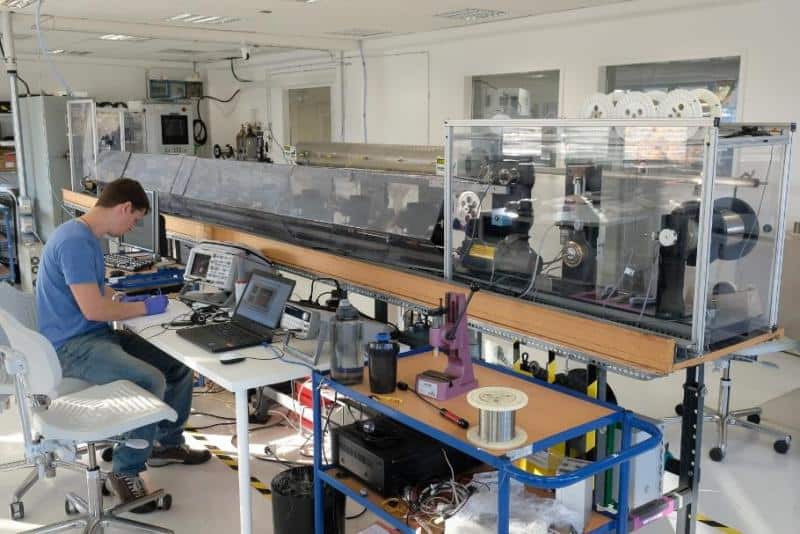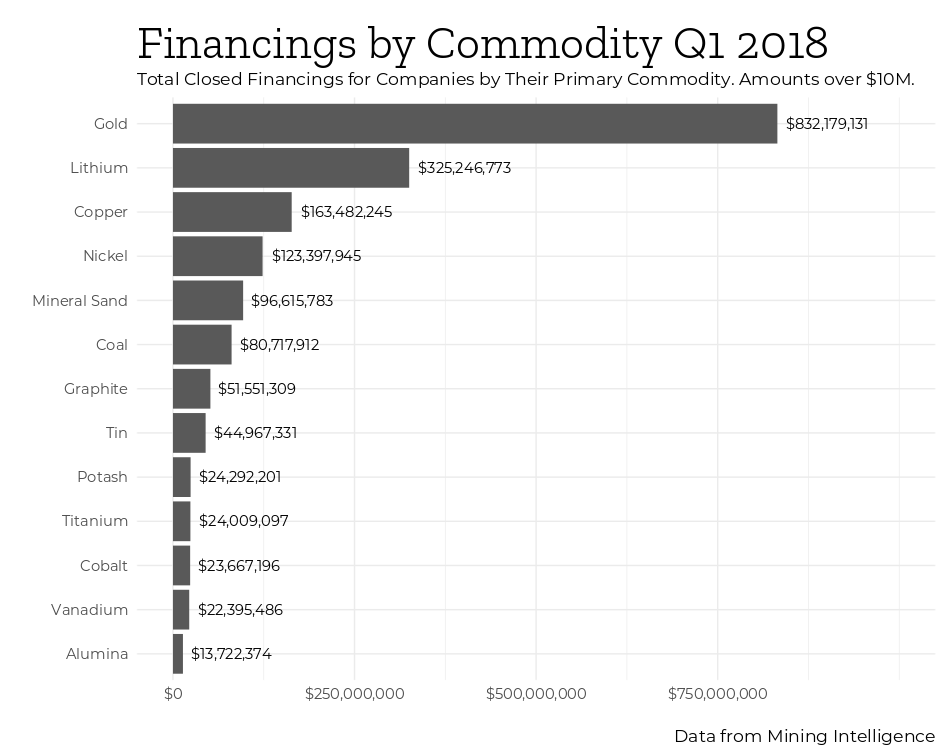
Lithium, copper and nickel companies raised big money during the first quarter in 2018.
Investors poured US$325M into lithium companies. Most of the money went to Orocobre. Toyota bought 15% of the Australian-based lithium company.
As usual gold was on top. Half the US$832M closed went to Lundin Gold to advance its Fruta del Norte gold project in Ecuador.
Cobalt was way down the list at just $23M, however the blue metal had a big 2017 powered by high-flier Cobalt 27.
Data is from Mining Intelligence looking at closed financings over US$10 million.
The top closed financings by company were the following:
